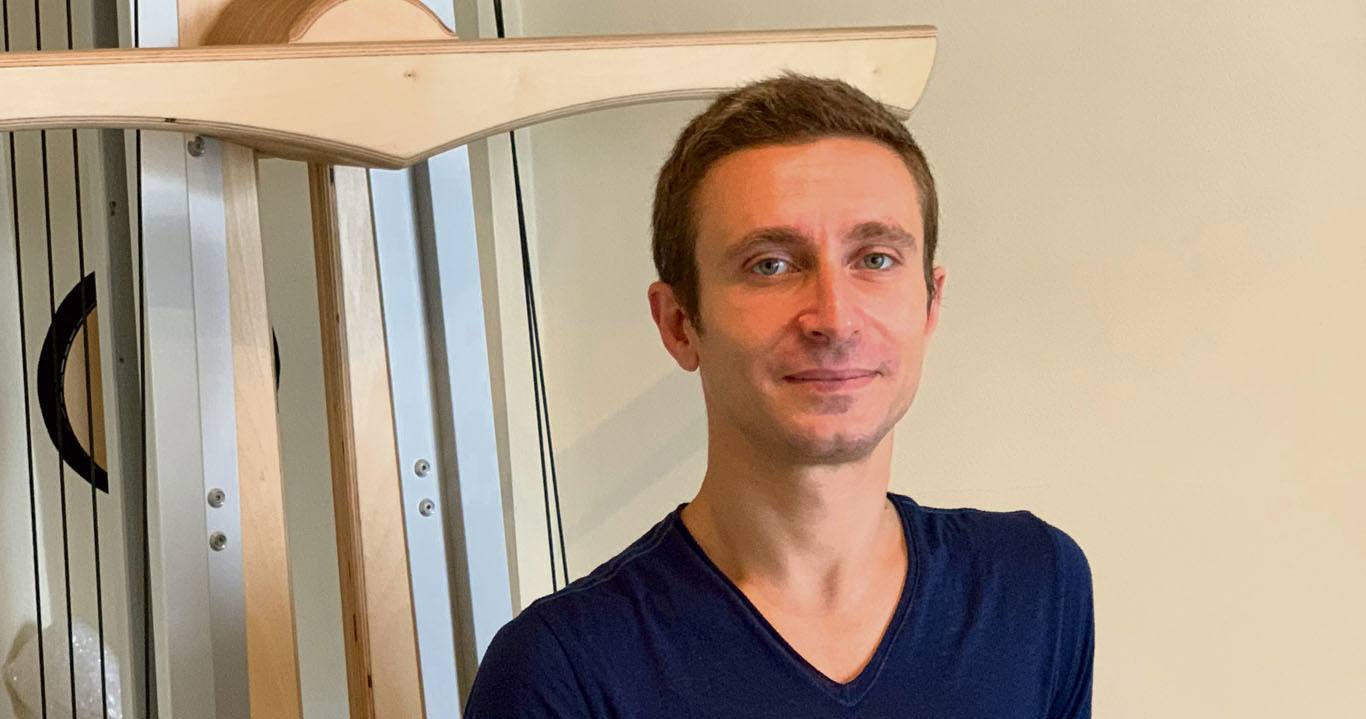Trusted Highgate Road osteopathy clinic The College Practice has just installed the area’s first Gyrotonic® pully tower, a formidable-looking apparatus that might be the future of fitness and rehabilitation, as ballet dancer and qualified Gyrotonic® trainer Angelo Zanfardino tells us in his own words.
Ialways wanted to be a doctor, and a dancer. I studied medicine in Naples and passed the University entry test, but at the same time I auditioned and won a bursary to study ballet for three years. I had to make a choice and put medicine to one side.
Ballet brought me to Kentish Town ten years ago. I came to London to dance. I still do three hours of it every day as I have done since I was five, and I’m forty now. As my professional career became less intense, I had time to study osteopathy and teach Pilates, too.
I’d ruptured my Achilles tendon dancing at 21, and always remembered how a session on a machine as part of my recovery and it was amazing. Within three months I was back on stage. So I headed back to Italy to train in Rome, the world centre for learning this method.
We’re only London’s second osteopath to host Gyrotonic®. Some people think the machine looks like a torture device, but in fact it’s a handmade system of pulleys that works with gentle resistance to mimic the body biologically, anatomically and physiologically. It takes the movement of things like swimming, yoga, martial arts and ballet and helps you move in three dimensions, based around the power of your breathing.
If you’re already familiar with something like Pilates, the 360-degree motion feels like a real discovery – you really find out where you hold tension in the body.
With this machine you cannot cheat. It uses both sides of you equally. That means it’s great for rehabilitation from injury, and also offers a strong grounding for sports that use particular muscle groups, such as golf, tennis, dancing and running. It’s ideal for people with back pain, and those with multiple sclerosis too. There’s no scientific research to prove that yet, but I’ve seen great results. I’d say around 80% of all the people who try it come back for more.
We expand, not contract. This system is designed to help you create a sense of space and opening of the whole body. It’s an expansion system that links the inside and the outside of the body together, whereas things like traditional Pilates machines are all about pulling things in and becoming closed.
Gentle movement makes you strong. People sit at a desk all day until 6pm and then at 6.05pm they go out running or are lifting weights at the gym. They are going to get injured. Warming up and cooling down are more important that the exercise itself.
We introduce movement gradually and follow the natural shape of your arms, legs and trunk in a figure of eight shape – which is also the symbol of infinity, which you find throughout this practice. It moves every single muscle. It really is the most gentle technique, but proves to be the most powerful at the same time.


